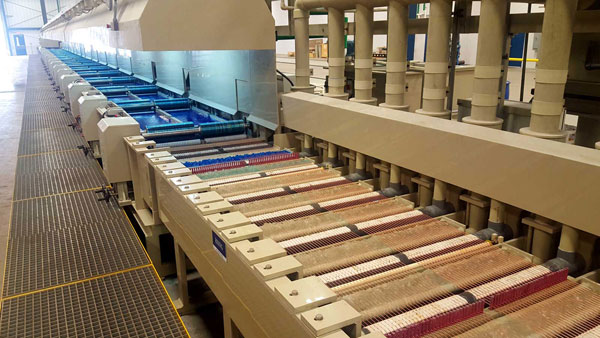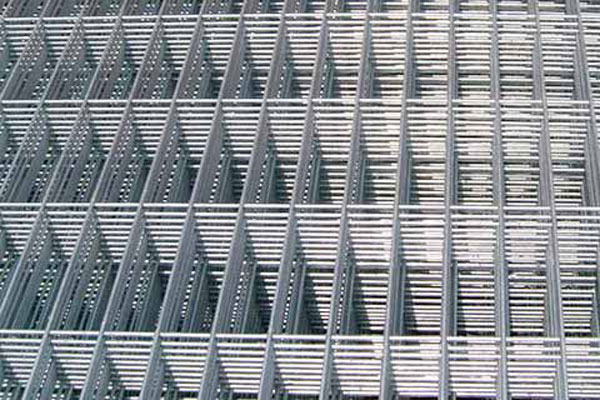Galvanizing can occur either before or after wire mesh is manufactured – both in woven form or welded form. After the welding or weaving is completed, the mesh is dipped into a bath of molten zinc. The zinc bonds to the wire’s surface, thoroughly sealing it and protecting it from rust and corrosion. One of the main benefits of a galvanized wire mesh is that it tends to offer a wide variety of opening sizes and diameter wires. It is used on wire meshes for a variety of applications of the finished product. Its applications include building enclosures, security cages, window grills and safety guards. Other than this, it is also considered as a great option for general fencing needs.
Method for Manufacturing Galvanized Wire Mesh
A thick, robust outer layer of zinc is what makes galvanized hardware cloth so strong and resilient. How does it acquire this coating? It can be done in a couple of ways: hot-dipping and electro galvanizing. Each process is outlined below.
Hot-Dip Galvanization
The hot-Dip Galvanizing method involves dipping the base metal into a molten pool of zinc. The three main steps in the hot-dip galvanizing process are surface preparation, galvanizing, and post-treatment. First, the base metal must be cleaned either mechanically, chemically, or both to assure a quality bond can be made between the base metal and the zinc coating. Once cleaned, the base metal is then fluxed to rid it of any residual oxides that might remain after the cleaning process. The base metal is then dipped into a liquid bath of heated zinc and a metallurgical bond is formed. This molten bath begins a metallurgical bond between the zinc and the receiving metal. After the metal is pulled from the bath, it reacts to being exposed to the atmosphere, and the pure zinc mixes with oxygen to form zinc oxide. A reaction then transpires between zinc and oxide particles in the air, making the final zinc-oxide protective layer.

The method is as followed;
- Cleaning stainless steel with a sodium hydroxide solution to remove residues.
- Removal of rust and contaminants,
- Application zinc ammonium chloride cleaning agent s applied to the surface to prevent oxidation.
- Stainless steel is dipped into a vat of molten zinc
- The steel remains in the vat until it reaches the same temperature as the hot zinc.
- After being removed, the stainless steel is rapidly cooled in a special tank.
Electro galvanizing
Unlike hot-dipping, electrogalvanizing (or electrolytic galvanizing) is a cold process. Zinc particles are used to create an organic solvent, which is applied to the steel surface. This causes a reaction between the substances, resulting in a zinc-steel alloy. When the solvent evaporates, the zinc remains on the metal. Electro galvanizing method utilizes an electrical current in an electrolyte solution to transfer zinc ions onto the base metal. This involves electrically reducing positively charged zinc ions to zinc metal which are then deposited on the positively charged material. Grain refiners can also be added which helps to ensure a smooth zinc coating on the steel. Electro galvanizing is typically applied continuously to a roll of sheet metal. The most common zinc electrolyte-anode arrangement uses lead-silver or other insoluble anodes and electrolytes of zinc sulphates.

Galvanizing Before and After Manufacturing Wire Mesh
Stainless steel can be galvanized either before or after it’s fabricated into wire mesh. When galvanizing occurs first, the metal is drawn down the desired diameter. The individual metal wires are coated with zinc and then woven or welded into screens. Welding can burn the zinc layer off at the joints, in which case it may need to be galvanized again. When fabrication comes first, pre-woven steel products are dipped into molten zinc or coated with a solvent.
Conclusion
Galvanized welded wire mesh offer superior corrosion resistance compared to low carbon steel without the expense of stainless steel. This type of welded wire mesh is designed for building fencing and in other infrastructural purposes. It is also available in different forms like rolls and panels for industrial uses.There are different methods of galvanization which differ from one another in terms of the material used, the thickness, as well as the type of processes that are included.

